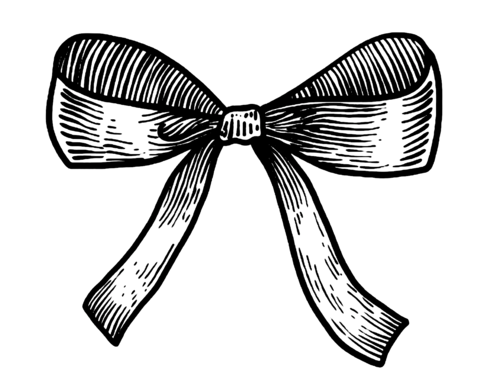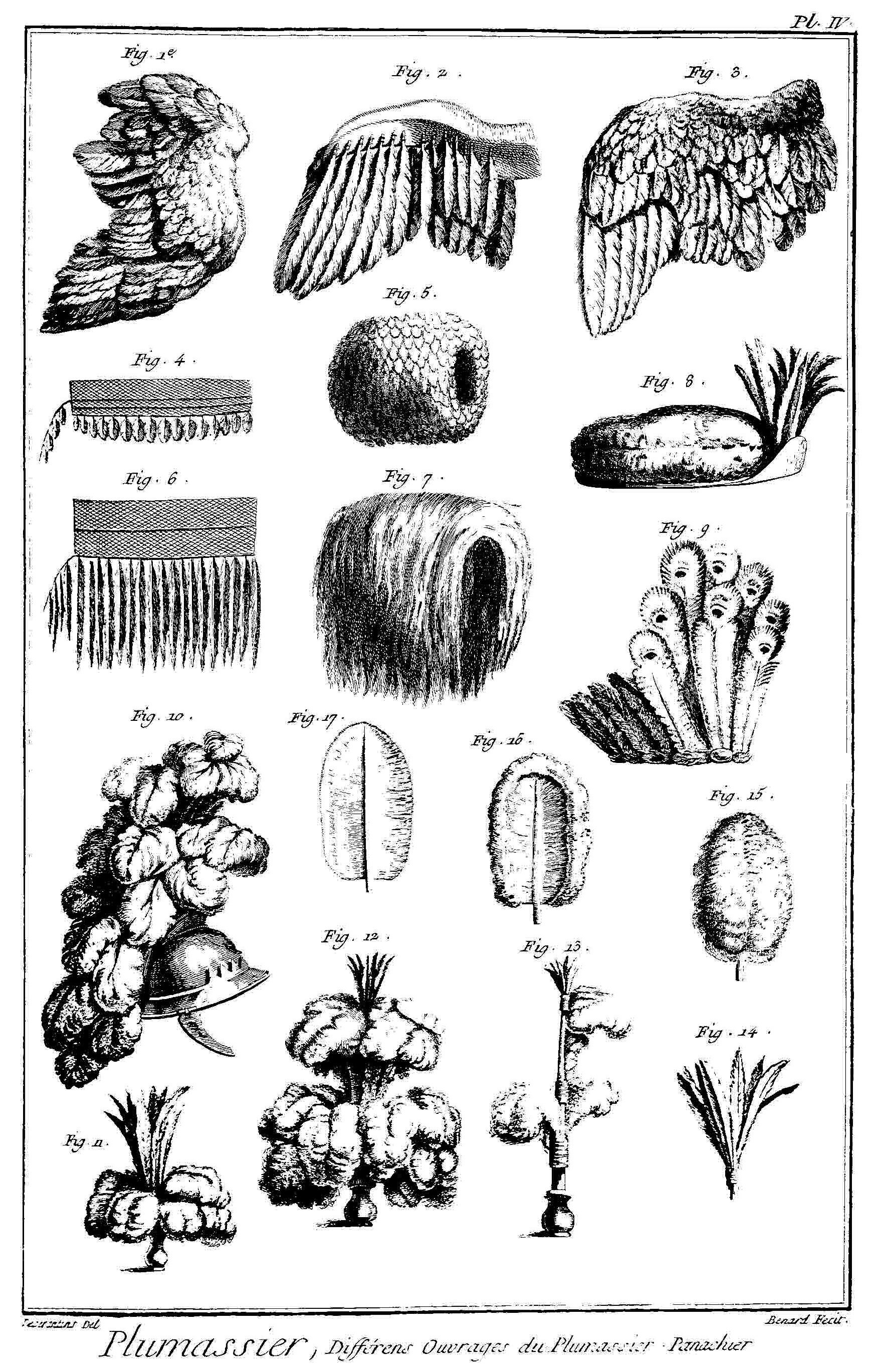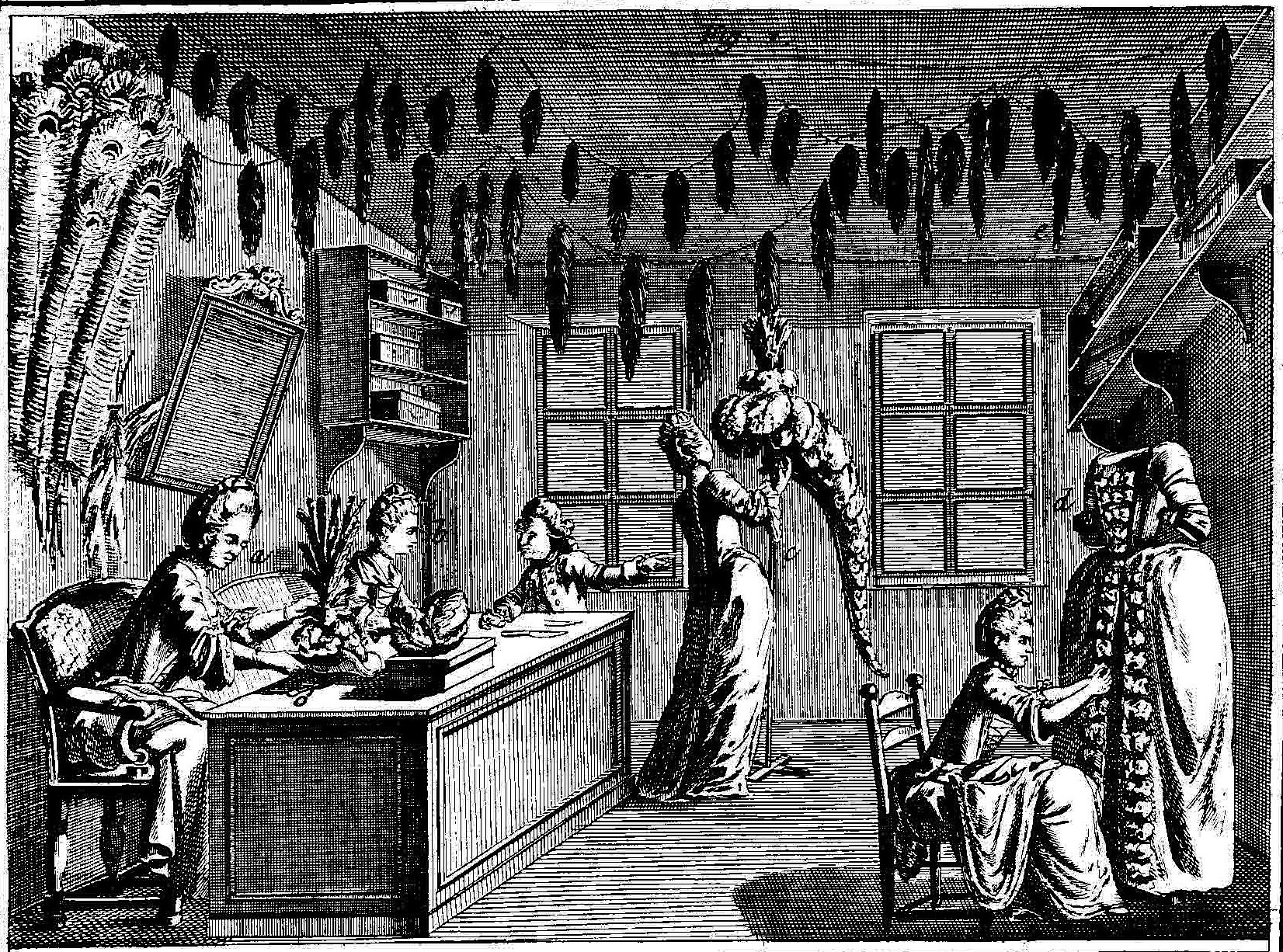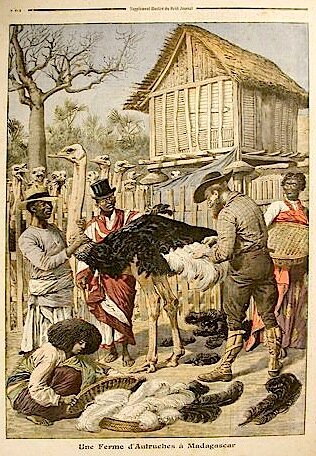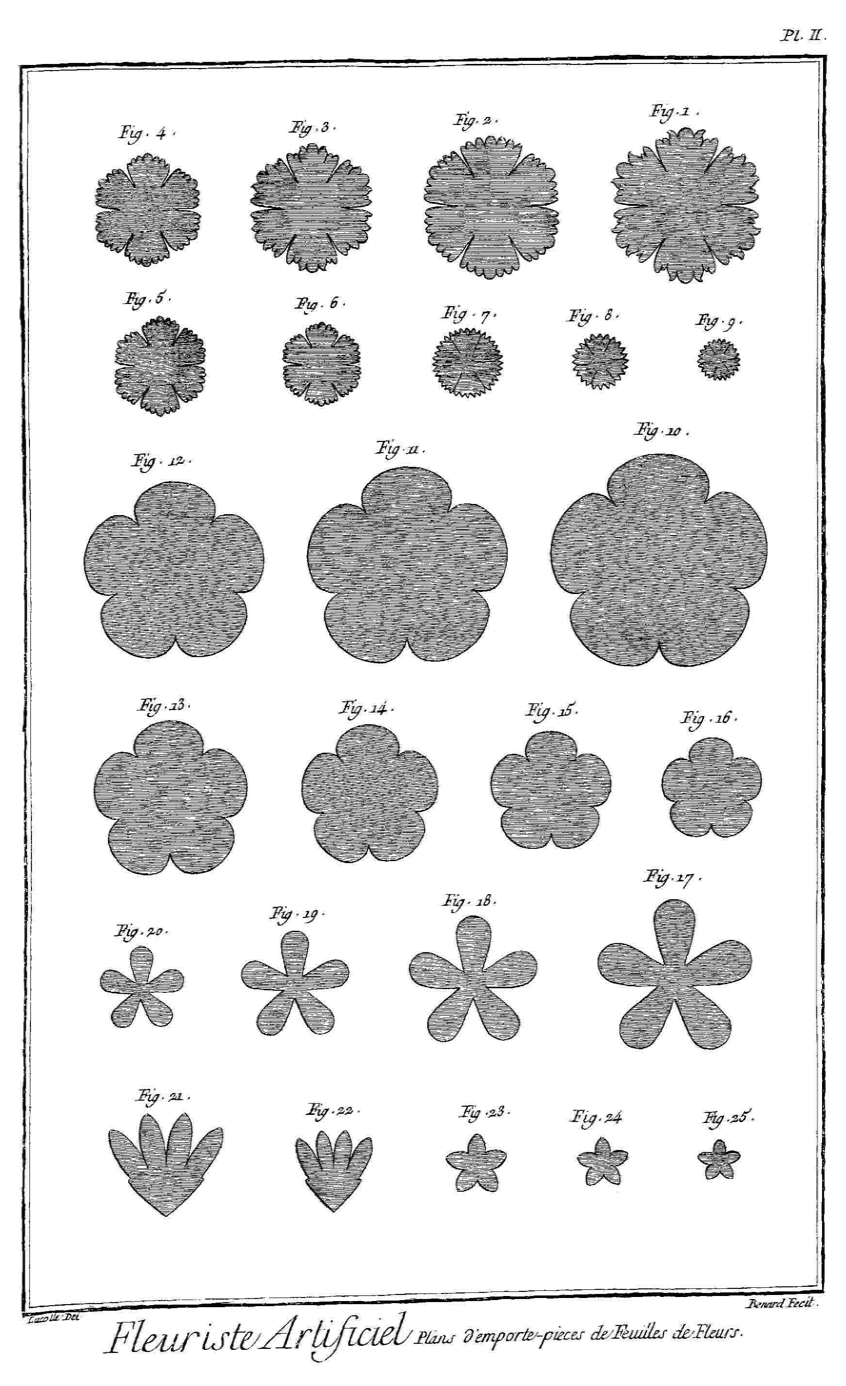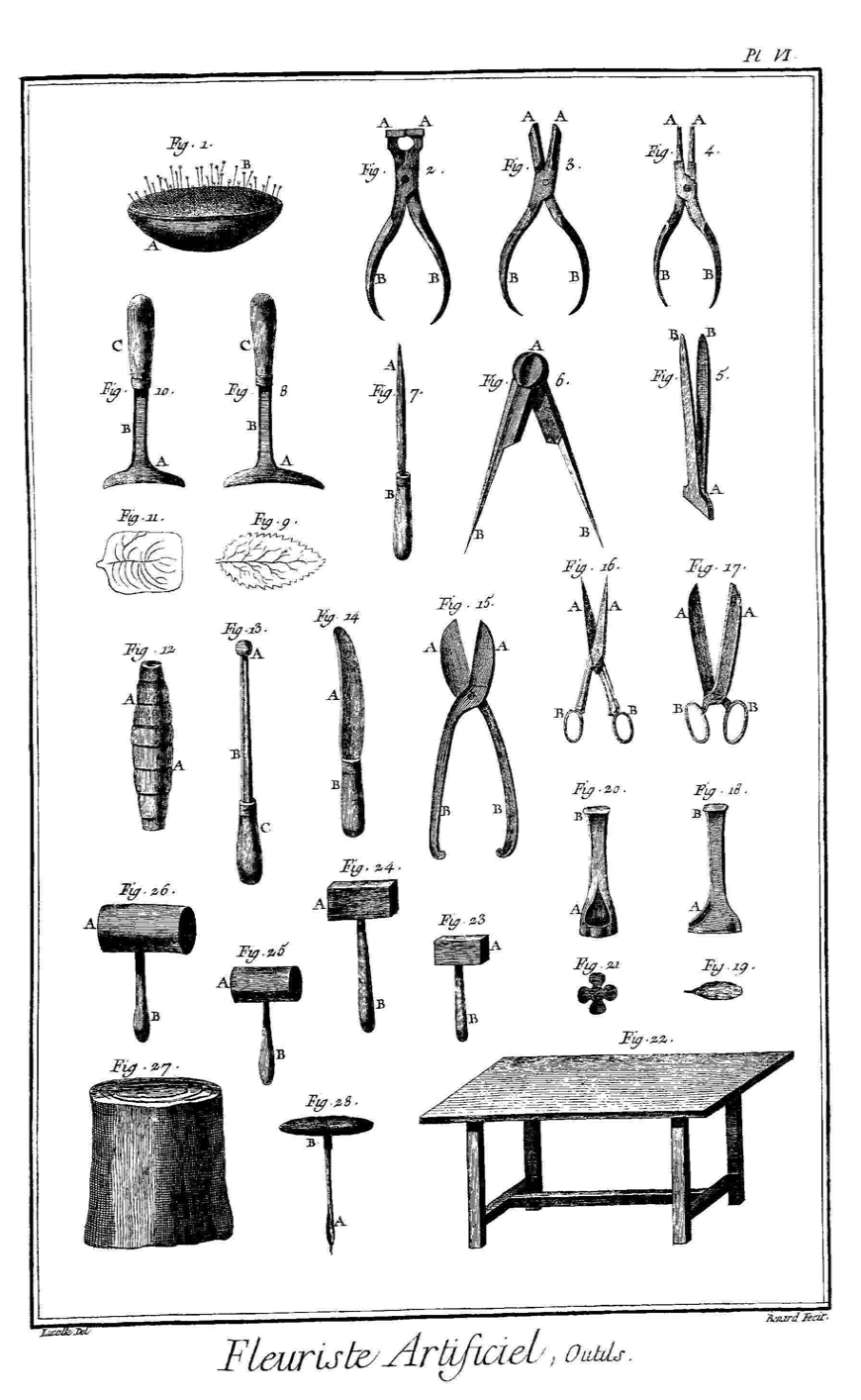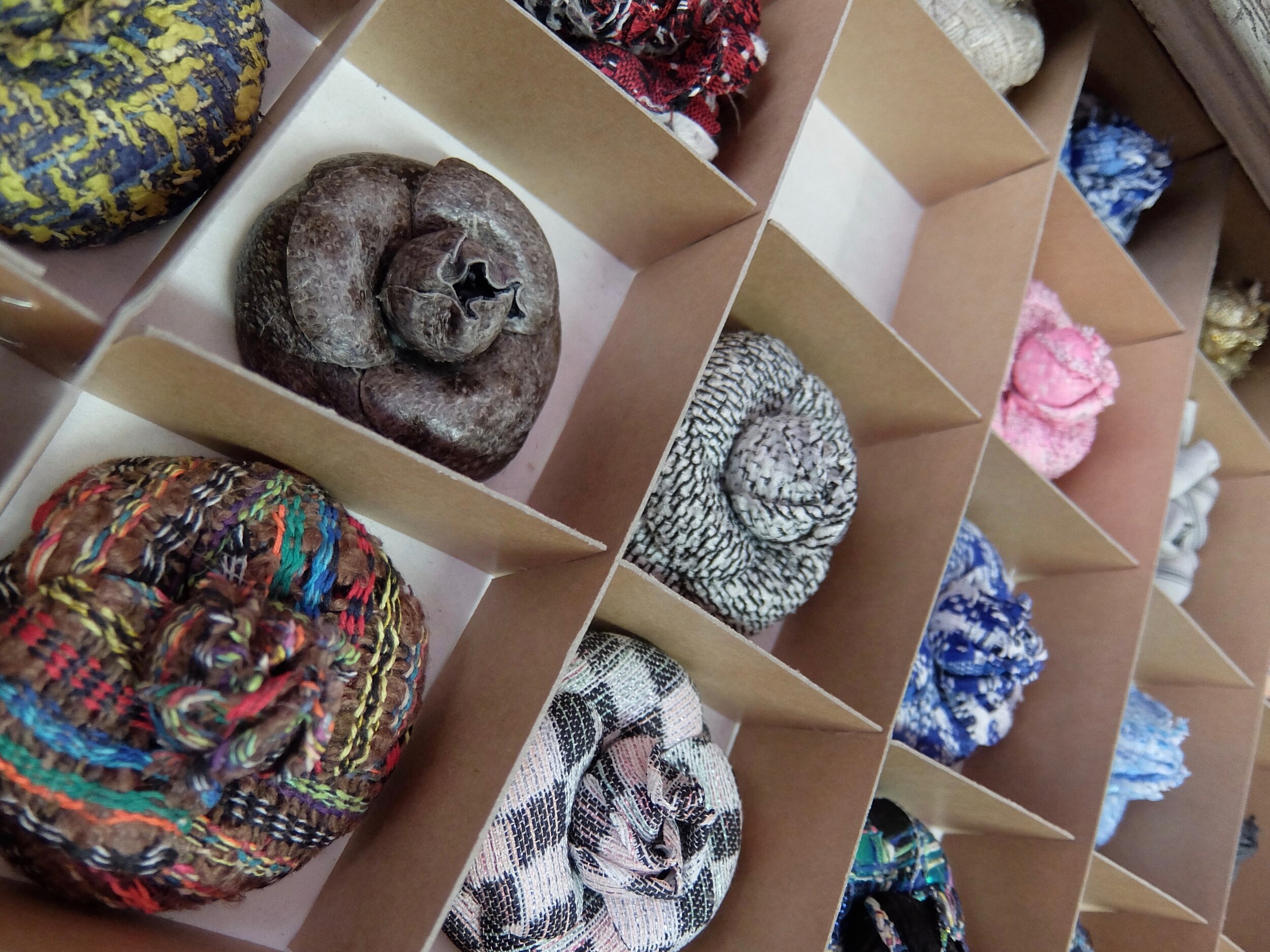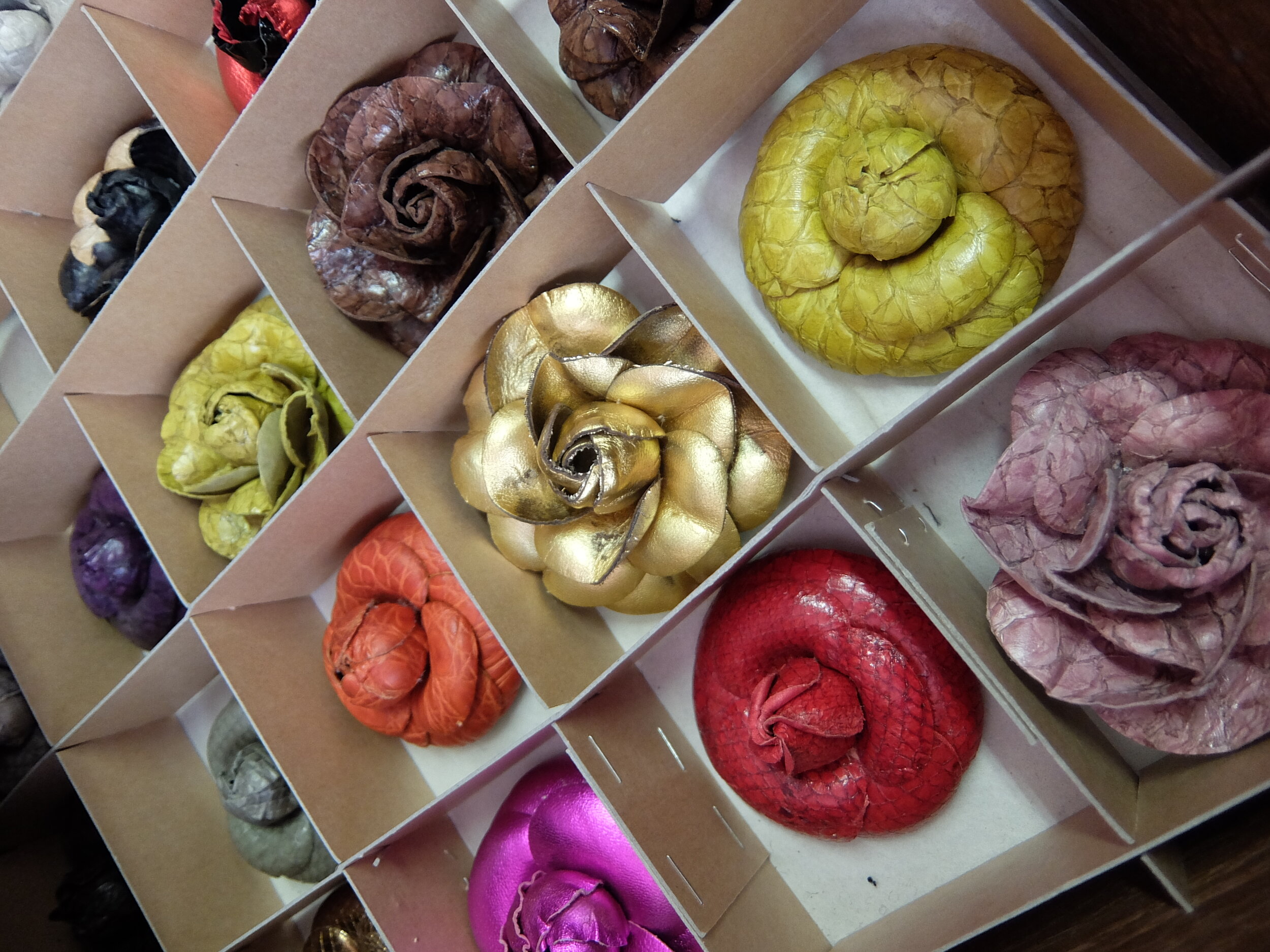The Fanciest Feathers and Flowers
The Featherworkers, Johann Hamza, 1902
Plumassière
A craftsperson who works with feathers is called a Plumassière. Their creations are used for millinery, fan-making, theatre and cabaret costumes as well as Haute Couture. In 1919 there were four hundred and twenty-five feather ateliers in Paris and today there are four; Maison Lemarié, Maison Février, Marcy and Maison Legeron.
Plumassier-Panachier, Encyclopédie de Diderot et d'Alembert (1752-1772)
The process is laborious and painstakingly meticulous, sacks of dyed or natural feathers are divided into batches and steamed to add volume. Then they are sorted by size and quality, selecting specimens that have no imperfections or blemishes. Depending on the desired effect the entire feather may be used or else certain parts such as the individual fronds or the tips. The feathers are caressed with fingertips ensuring the fronds are brushed in the same direction. The feathers or individual fronds may also be curled. Once all this preparation has been completed the feathers are glued or sewn in place using a special feather tweezers.
Plumassier-Panachier, Encyclopédie de Diderot et d'Alembert (1752-1772), Plumes, Larousse Pour Tous ( 1907-1910), Élevages d’Autruches à Madagascar, Le Petit Journal (1909), Plumassier-Panachier, Encyclopédie de Diderot et d'Alembert (1752-1772)
Fabricant des Fleurs Artificielles
The Clerkenwell Flower Makers, Samuel Fisher, 1896
A craftsperson who creates artificial flowers is called a fabricant des fleurs artificielles. They are also known as Paruriers, a uniquely French term which refers to ornamentation or decoration that is made specifically for Haute Couture such as jewellery, buttons and artificial flowers (I can’t pronounce paruriers, no matter how hard I try). Up until the 20th century these craftspeople were in huge demand in Paris, creating floral blossoms for milliners, dress-makers and the Haute Couture maisons. Today there are three artificial flower ateliers in Paris; Maison Lemarié, Guillet and Maison Legeron.
Fleuriste Artificiel, Encyclopédie de Diderot et d'Alembert (1752-1772)
The process is lengthy, beginning with the preparation of the fabric which is stretched over a wooden frame and then treated with stiffening gum, starch or gelatine solutions. The stiffened fabric is arranged in layers on the bed of the cutting press. Each flower has a corresponding emportes pièces, a metal tool that cuts or punches the form of the flowers or their individual petals. The petals are dyed in baths to give a base colour and then left to dry slowly overnight. They are then delicately painted by hand, adding intricate details to the tone and texture. Once the painting has dried, each petal is individually and expertly moulded, folded, curled and pleated into form using flame-heated tools. The petals are glued one-by-one around a brass wire covered in silk thread or paper which provides the support and represents the pistil.
Maison Legeron
Maison Legeron was founded in 1727 as an atelier specialising in the manufacture of artificial flowers and feather ornamentation. Monsieur Louis Legeron bought the atelier in 1880 and it has remained in his family since then. Maison Legeron is recognised as an Enterprise du Patrimoine Vivant, a prestigious acknowledgement of French heritage, craftsmanship and savoir-faire.
A few years ago I had the pleasure of visiting Maison Legeron. The atelier was managed by the great-grandson Monsieur Bruno Legeron who spent his childhood amongst flowers and feathers. After school he would return to the atelier where there was always something to do, at 10 years of age he delivered orders to make some pocket money. His parents and grandparents naturally passed down their savoir-faire to the young Bruno until he was fully trained in the craft of feathers and artificial flowers. The family traditions continue today from the tools used in the atelier to the expert techniques mastered and honed over generations.
The atelier was on two floors with a boutique and showroom on the first level. Upstairs the stock room was filled with cardboard boxes of feathers, carefully labelled like an ornithologists notebook; pheasant, rooster, pigeon, turkey, guinea-fowl and even penguin. There was even a separate room dedicated to ostrich feathers!
Maison Legeron is famed for creating Coco Chanel’s signature Camelia and they count the crème de la crème of Haute Couture clientele; Dior, Givenchy, Louboutin, Jimmy Choo, Maison Lesage and so on. Today Maison Legeron is part of Paraffection where they continue to create feathered fancies and floral profusions.
Further Reading
Feathers and Fashion during the Belle Époque, Anne Monjaret
